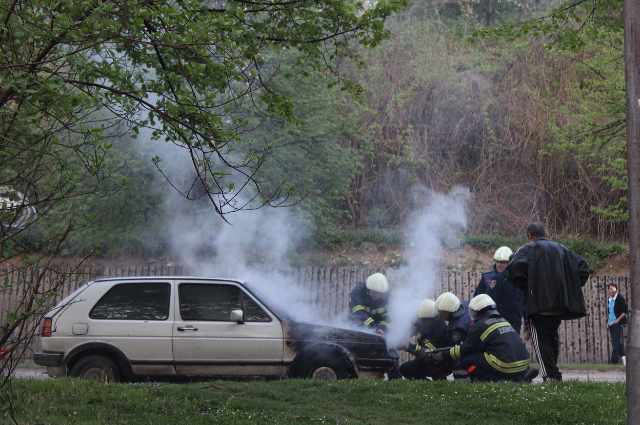
Image by Selver Učanbarlić from Pixabay
Road accidents are increasing every year in India claiming human lives in gay abandon. Despite good road conditions and security measures put up by the government authorities, this trend is intriguing. According to National Crime Records Bureau figures of the year 2021, road accidents take more lives than homicides. According to data revealed in 2018, 1 road accident occurs every four minutes in India. With over 1,45,000 fatalities a year, India accounts for 12.5% of global road accidents. Though there are multiple reasons for this state of affairs, the end result is disastrous to human lives. S.C. Nagpal, currently Member, the National Road Safety Council, Government of India, has aptly summed up the problem in the following words: “A quick look at the road traffic is enough to reflect the administrative and political indifference towards road safety. For a serious road crash, there will be charges framed against erring drivers, but rarely against road-safety public officials for non-enforcement of traffic rules, for not taking urgent coercive action on conspicuous road hazards. At the macro level, various institutions of road safety, both at the Centre and states, are mostly engaged in routine work and bear no accountability for failure to produce desired results. Apathy combined with a lack of working out the systemic problems and absence of result-based interventions have marred the country's road-safety image”. Undoubtedly, road accidents are increasing in India due to several reasons.
The NCRB Reports (confirming road accidents as the number one killer)
According to this report, the number of people killed in accidents is nearly one and a half times of those murdered across the country.
- At least 43,499 people were killed in hit-and-run incidents while 29,272 people were murdered in separate incidents across the country in 2021.
- Around 41,196 people lost their lives in hit-and-run incidents while 29,193 people were murdered in 2020.
- Around 47,504 people succumbed to hit-and-run incidents while 28,915 people were murdered in 2019.
The Primary Causes (of Road accidents)
1. Reckless Driving
The major cause of road accidents is rash driving by the drivers, especially on the highways and the important connecting roads. During the last few decades, the conditions of roads in India has improved tremendously with the help of latest road-construction techniques. On these near-flawless roads, the drivers are often tempted to drive at break-neck speed ignoring all the rules of road-safety resulting in fatal accidents. It is estimated that ‘impact on a person by a vehicle cruising at 60 km per hour is equivalent to falling from a four-storey building, while its impact at 100 km per hour equals to falling from a 12-storey building.’
2. Phone Distraction
Using mobile phones while driving is a common malaise. This habit becomes more dangerous when the vehicle is being driven at high-speed. ‘Using mobile phones while driving diverts 50% of our senses. An aware and conscious drive reduces chances of mishaps by 80%.’ The correct mode of talking on the roads by using mobile phones is to park one's vehicle on the side of the road and then resume conversation on phone. But this is seldom done.
3. Drunk-Driving
This is also a very significant cause of road accidents. Many people think that by consuming alcohol, driving would be more joyful and entertaining. But this is not true. After consumption of alcohol, the senses begin to dull gradually and in these weak moments, accidents take place. It is estimated that 1.5% of road traffic accidents and 4.6% of fatalities are attributable to drunken driving. While Karnataka, Andhra Pradesh, Tamil Nadu and Kerala have done away with country-made liquor under ‘drink less drink best’ methodology, other states such as Uttar Pradesh have to follow suit.
4. Non-use of Seat Belts
Wearing a seat belt while driving is in itself a robust safety measure. It's importance came into focus after the death of former Tata Sons chairman, Cyrus Mistry and his friend Jahangir Pandole in a road accident in Palghar near Mumbai on September 4,2022. As per the initial police investigation, both were not wearing seat belts. Rule 138(3) of the Central Motor Vehicles Rules, 1989, makes it mandatory for the rear passengers too to wear seat belts. Further, non-wearing of seat belts by the driver or passengers has been made punishable with a fine of one thousand rupees according to Section 194 B (1) of the Motor Vehicles Act, 1988 (as amended by the Motor Vehicles (Amendment) Act, 2019). As per the report “Accidents India” of the Ministry of Transport and National Highways in 2022, Uttar Pradesh stands in the first rank in terms of the number of deaths due to non-use of seat belts. As many as 18,881 people died since 2016 because they did not wear seat belts while driving the cars at the time of accidents.
5. Faulty Road Construction
Often the design and road construction are faulty and lack professionalism. Further, their quality and maintenance are not up to the mark. That needs to be improved in the light of international best practices. As per the study conducted in 2018, it was found that nearly 30% of Delhi-Mumbai and 50% of Chennai-Mumbai stretches of the 5,431 km Golden Quadrilateral unsafe for motorists. This is indeed shocking to find such a low standard of a prestigious project. Further, despite the diversity on Indian highways-cars, heavy vehicles, two-wheelers, cyclists and pedestrians can be seen competing for space-pedestrian crossings, traffic signals, road signages, pavements, cycle and motorcycle paths, foot overbridges, highway patrols and para-medical teams are in short supply. This state of affairs deserves immediate change.
6. Poor Quality of Drivers
In India, getting a driving license is not a difficult process. Many people get it without undergoing proper tests. Before a person gets a driving licence, it is mandatory for him to pass this test. But many of them skip it with the complicity of the ‘dalals or mediators’ and the transport department as such. According to a survey conducted by road safety advocacy group, SaveLife Foundation in 2017, it was found that six out of every ten people with a driving licence in India never actually sat behind a wheel to get it. This survey was done across 10 cities, including the five metro, which have the highest vehicle population.
The position is more or less the same in the present scenario.
7. Fines are not an Efficacious Solution
Though the fines for speed driving and other acts have been increased many times, they are either not being imposed dutifully or a lackadaisical approach is shown in recovering the amount from the lawbreakers. As a result, people are not afraid of penalties and fines imposed by the transport department. Sometimes, the courts lessen the fine imposed to a paltry level at the first hearing. This is not a healthy sign with a view to check the menace of road accidents.
Conclusion
In India, road accidents have become an unending phenomenon. Despite the fact that the worst sufferers are the family members of the dead persons, people at large seem to be oblivious of the looming danger. Moreover, it should be kept in mind that on several occasions, the victims are poor and downtrodden people who were traveling on the road innocently. The plight of their hapless families is easily understandable. With the latest amendments in the Motor Vehicles Act in 2019, the law has been given more teeth. But there seems to be a lack of spirited efforts in the successful implementation of these legal provisions. All the wings of the government including transport, police and public works departments should act in unison to achieve the purpose. Further, the urgent and most-wanted action needs to be taken by the people who sit behind the driving seat. Avoidance of drinking liquor and taking care of the speed of the vehicle can be helpful in averting fatal accidents on roads. Government can't do it alone without the support of the people. One thing is very sure such accidents are avoidable and every single effort must be made by all concerned to save even a single human life. Also, the government should ensure that a technical audit or inquiry of every road accident should be conducted to assess the design or construction fault of the particular road where the accident has occurred. It should not be seen only from the angle of the driver's fault or failure. Only then will things start moving in the right direction.
